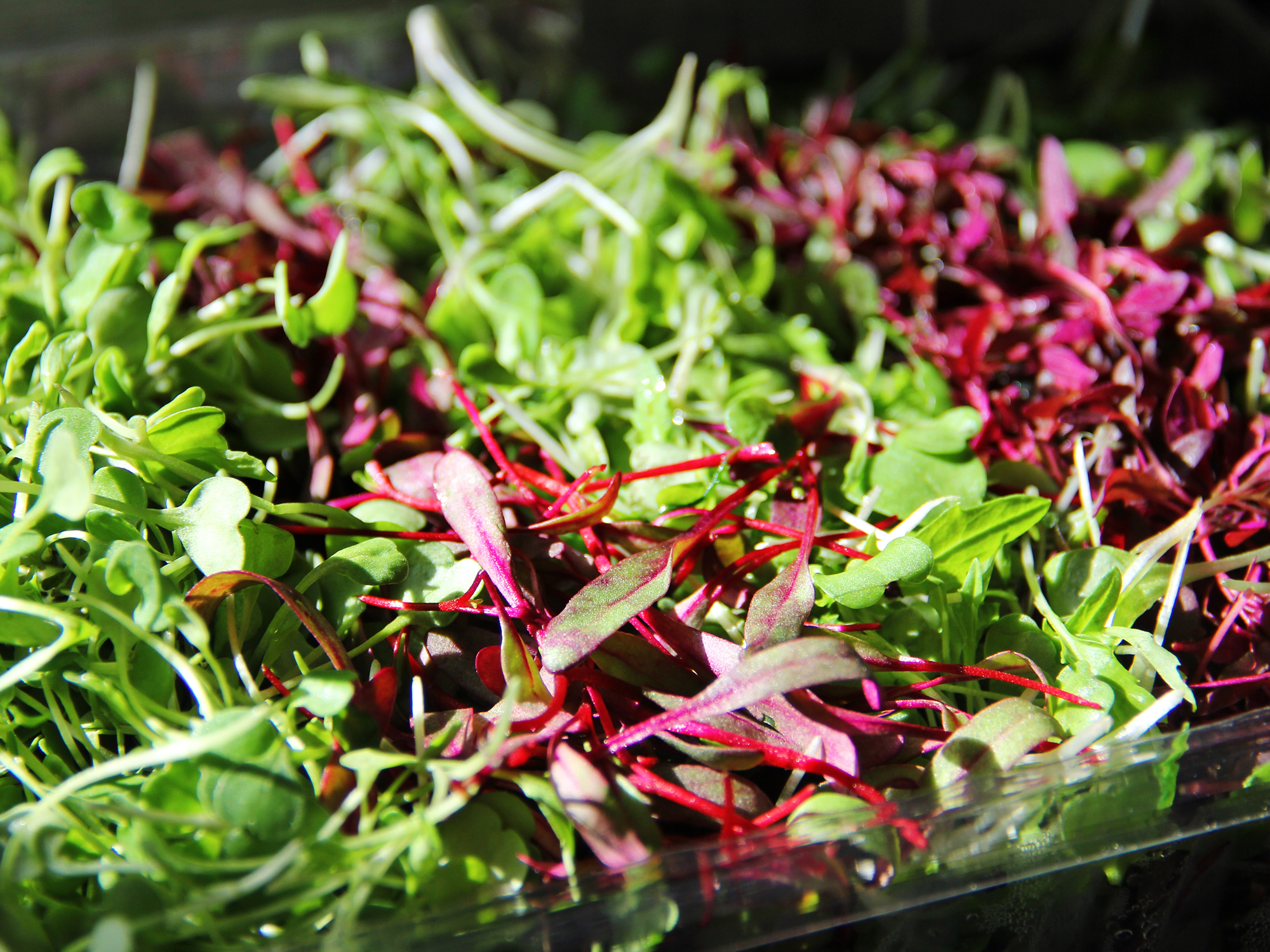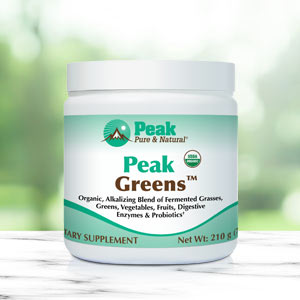Get Easy Health Digest™ in your inbox and don’t miss a thing when you subscribe today. Plus, get the free bonus report, Mother Nature’s Tips, Tricks and Remedies for Cholesterol, Blood Pressure & Blood Sugar as my way of saying welcome to the community!
Tiny ‘microgreens’ give your heart bigger boost

You know greens are good for you. That’s why you stock your fridge full of big, leafy bunches of romaine, kale, spinach and chard. But when it comes to greens, bigger isn’t always better. In fact, the smaller your greens are, the healthier they may be…
Microgreens are up-and-comers on the greens scene because they pack a lot of nutrients into a small package. They have 40 times the nutrients you get in full-sized greens. That means every time you eat a plate full of microgreens, you’re getting 40 times more vitamin K, vitamin C, vitamin E, beta-carotene and other nutrients.
That sure sounds like a good deal. But you may still be wondering…what exactly is a microgreen?
Well, it’s a regular green that hasn’t reached full maturity yet. It’s somewhere in between a sprout (which is known as a nutrient-rich disease-fighter in its own right) and those big, leafy greens you buy at the grocery store. You may have also seen something called “baby greens” in the grocery store too. These are greens that are a little more mature than microgreens.
You can harvest microgreens from any green, including arugula, kale, spinach, lettuce — you name it. You can even harvest them from vegetables that aren’t leafy greens, like carrots, broccoli, cauliflower and Brussel sprouts. In fact, one of the healthiest microgreens around comes from an often overlooked vegetable known as the red cabbage…
Cabbage microgreens may help your heart
Researchers from the USDA found that red cabbage microgreens helped lower cholesterol levels and weight gain in obese mice that were fed a poor diet… which means they have the potential to do the same for humans too.
Of course, these results aren’t exactly a surprise. In fact, when researchers started feeding these mice red cabbage microgreens, they figured this would be the outcome. That’s because previous research showed that full-grown red cabbage can do the same thing. It can lower LDL (bad) cholesterol and possibly reduce the risk of heart attack, stroke and other cardiovascular diseases.
But, in true microgreen fashion, red cabbage microgreens have even more heart health potential than their full-grown counterpart. That’s because they contain higher levels of polyphenols and glucosinolates — the natural micronutrients in red cabbage that lower cholesterol and promote weight loss. So, when researchers fed obese mice red cabbage microgreens, they found that the effect on their weight and cholesterol was even better than when they fed them mature red cabbage.
The path to a plate full of microgreens
If you’re ready to pump your body full of healthy nutrients, including powerful missing micronutrients, and possibly even lower your risk of heart disease, I have good news….
Microgreens are easy to grow in a kitchen windowsill. That means if you’re willing to put in a little work, you can have fresh, nutrient-rich microgreens on your plate regularly for very little money. Here’s what you need to do:
- Purchase a package of seeds (if you’re looking to receive cholesterol or cardiovascular benefits, start with red cabbage seeds, of course).
- Find a small, clean container. Plastic take-out containers are a good choice.
- Cover the bottom of the container with an inch or two of lightly moistened potting soil. Gently flatten it out with your hand, being careful not to pack it down too much.
- Sprinkle a layer of seeds evenly over the soil. Push them gently into the soil using your hand.
- Put a thin layer of soil over the seeds. Lightly moisten the soil with a spray bottle.
- Put the container in a windowsill where it will get at least four hours of direct sunlight per day.
- Until the seeds sprout, mist the soil lightly once or twice per day. But be careful not to spray it too much. The soil should be moist, not wet.
- Once you have sprouted seeds continue misting the plants once or twice per day until your microgreens are ready to harvest.
- Your microgreens should be ready to harvest about two to three weeks after you planted your seeds. You’ll know they’re ready because you’ll see their “true leaves” sprouting. These are different than the leaves that came out when the seed first sprouted (known as cotyledons). The true leaves will sprout above the cotyledons and will look like the plant’s adult leaves…but smaller.
- Once the true leaves make an appearance, you can pull out your scissors and cut the plants just above the soil. Rinse them off and enjoy a heaping plate of microgreens with your favorite salad fixings. Or add them to a burger, pizza or omelet. The possibilities are endless.
Of course, if this all sounds like too much work for you, you can also purchase your microgreens. They’re available at some grocery stores and farmers markets. Truthfully, it doesn’t matter where you get your microgreens… as long as you get a heaping serving of their health-boosting benefits.
Editor’s note: There are perfectly safe and natural ways to decrease your risk of blood clots including the 25-cent vitamin, the nutrient that acts as a natural blood thinner and the powerful herb that helps clear plaque. To discover these and other secrets of long-lived hearts, click here for Hushed Up Natural Heart Cures and Common Misconceptions of Popular Heart Treatments!
Sources:
-
“Red cabbage microgreens could reduce risk of cardiovascular disease.” Medical News Today. http://www.medicalnewstoday.com. Retrieved December 30, 2016.
-
Huang, et al. “Red Cabbage Microgreens Lower Circulating Low-Density Lipoprotein (LDL), Liver Cholesterol, and Inflammatory Cytokines in Mice Fed a High-Fat Diet.” Journal of Agricultural and Food Chemistry, 2016, 64 (48).
-
“What are Microgreens, and Why Should You Care?” Urban Cultivator. http://www.urbancultivator.net. Retrieved December 30, 2016.
-
“How to Grow Microgreens.” Gardener’s Supply Company. http://www.gardeners.com. Retrieved December 30, 2016.
-
“How Can I Tell a True Leaf From a Cotyledon?” The San Francisco Chronicle. http://homeguides.sfgate.com. Retrieved December 30, 2016.













